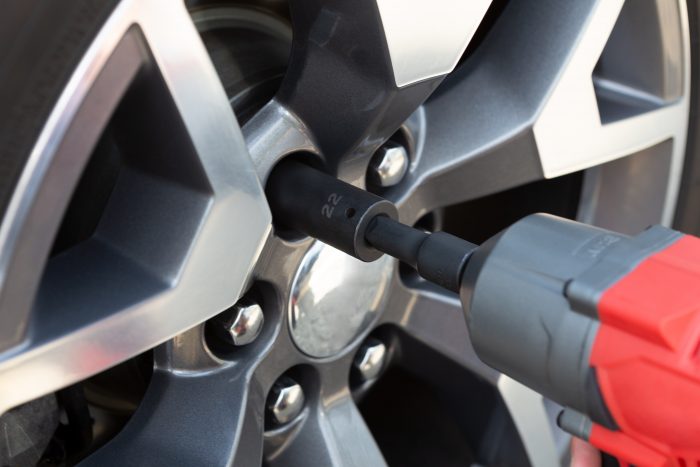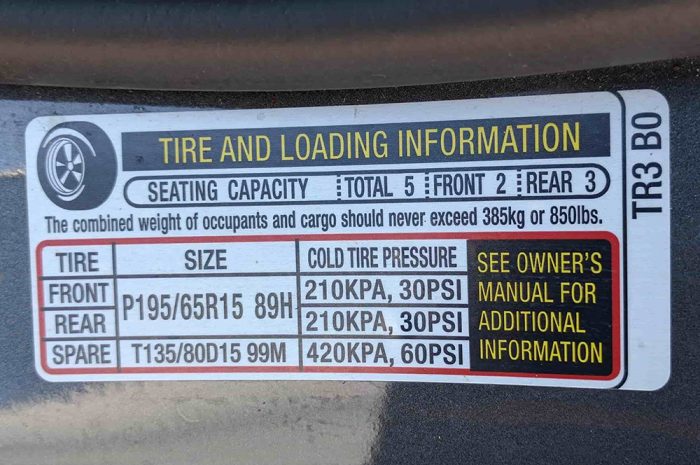
Tires are the only part of your car that is in constant contact with the road. And a lot depends on the condition of the tires, and one of the main indicators of their good condition is the pressure. It may come as a surprise to many people to learn that higher than usual fuel consumption, unusually sluggish driving, underbody rattle, and several other both small and quite significant deviations may be related to improper tire pressure. What’s more, higher or lower pressures reduce tire life and increase the risk of tire damage.
Properly inflated tires make for a comfortable ride, safe driving, and longer tire life. How high should a car’s tire pressure be? Do they need to be adjusted and what happens if you change them one way or the other? We tried to answer all the above questions in the most informative way in this article.
What are the dangers of incorrectly inflated tires
The pressure in car tires is determined by the density of the air inside the tire. The density indicators affect the uniformity of weight distribution and the quality of traction of the wheel with the road surface. These factors have a direct impact on the tire’s life cycle, fuel consumption, and ultimately, the safety of the driver, passengers, and others.
Overinflated tires are just as dangerous as underinflated ones. This can be noticed even superficially, visually, because both increased and decreased pressure inside the wheel reduces the contact area with the road. It is especially noticeable on a hard surface, such as asphalt. With excessive pressure, the tire is in contact with the road with only the middle part of the surface, and with reduced pressure – with the sides and center parts.
When there is not enough air, the wheels do not hold the road in turns and sudden braking, the stability is reduced, and the car does not obey the steering wheel. This increases the risk of skidding and crashing.
When there is too much air, there is vibration, which affects riding comfort, uneven tire wear, and, most dangerously, increases the braking distance of the car.
So how do you know if your tires are properly inflated?

You can find out if your tires are properly inflated by checking the tire pressure level. Each car manufacturer has standards and recommendations for the level of internal pressure in tires. It is always best to stick to them. You can find the correct figures:
- In the car’s owner’s manual
- On a special sticker inside the car (usually on the car door, middle body pillar, or gas tank hatch cover). The latest models have a QR code on the sticker, by clicking on which you will see all the necessary information.
The manufacturer stipulates not only the optimal level of internal pressure but also the limits to which it can be increased or decreased concerning the norm. The pressure value depends on the tire size, and on some cars the recommended pressure for the rear and front wheels is different. To summarize, for the majority of passenger cars, the recommended permanent tire pressure ranges between 2-2.5 atmospheres. This is the norm not only for comfortable and safe driving but also for fuel economy.
Tire manufacturers also indicate the pressure indicator on the label, but here it is important to keep in mind that the figure you see on the sidewall of the tire is not the norm to strive for, but an indicator of the maximum pressure the tire can withstand and not burst.
How to measure tire pressure?

First, a little high school theory. Car tire pressures are measured either in bars (designated “bar”) or in pounds-force per square inch (designated “psi”). As a rule, both values are indicated on the driver’s door pillar and in the vehicle’s datasheet.The maximum permissible tire sidewall pressure is stated in technical atmospheres (designation “at”) and pounds per square inch (designation “psi”).
1 psi = 0.068948 bar,
1 bar = 14,5 psi.
To check and adjust the density of the air in the tires a special measuring device – a pressure gauge is used. Quite often this device is complete with a compressor. To date, there are several types of gauges on the market, so finding a convenient one for you personally will not be difficult.
Also, most modern automobiles are equipped with onboard sensors with indicators of temperature and pressure. Data on air level and temperature are displayed on the touch screen of the car. The onboard system itself warns the driver of the need to inflate or deflate the wheel.
It is important to remember that the tire rubs against the pavement and the pressure level increases as you drive. It heats up and increases the volume of gases inside the tire, so the air must cool down for the tire level to be measured correctly.
How often to check the tire pressure?
Experts recommend checking the tire pressure every two or three weeks if the car is used regularly. If the car is parked for a long time and often in the garage, tire pressure should be checked after each long period of parking. In addition to regular checks, there is a need for unscheduled ones.
So, in addition to once every two weeks, or before long trips, tire pressure should be checked:
- Every 10000 kilometers;
- After each removal of the tires;
- In case of sudden weather changes.
The “weather” factor should be discussed in a little more detail, as in winter and summer the pressure in car tires can be different. It depends directly on the physical properties of the gas with which the tires are inflated, because at high temperatures the gas tends to expand, and at low temperatures – on the contrary, to contract.
During the cold season, there is a significant drop in air pressure inside the wheel. But it is better to measure the pressure in winter, not immediately, but several hours after the car is in the open air (in case you park it in an indoor garage).
In summer, as the air and road temperature increase, the tire pressure can rise quite significantly. And just like in winter, tire pressure should be measured a few hours after using the car.
Summary
- Tire pressure affects ride comfort, vehicle handling, and safety. Underinflated tires wear faster, can burst sideways, and become much hotter while driving. When tires with reduced pressure are used for a long time, the tires deform in such a way that they can no longer be repaired. Overinflated tires lose reliable traction and the car loses control. In addition, driving on overinflated tires greatly increases the braking distance and every bump becomes more perceptible.
- The optimum pressure ratings are the individual specifications recommended by the vehicle manufacturer. These data can be found in the accompanying service documentation, the owner’s manual, and on special labels.
There is no general norm for tire pressure, as it is related to the make, model, and modification of the vehicle. The pressure may also depend on the axle of operation. It is related to the weighting of the car, chassis settings, and expected driving characteristics. But, taking into account all manufacturers’ recommendations, there are average density figures for the main rubber sizes. For a profile height of 65, 70, and 80, the normal air pressure is 1.8-2.0 kg/square cm. And, for passenger cars, the maximum value cannot exceed 3 kg/cm2.
- Checking tire pressure has to be done at least once a month and is obligatory each time you plan a long trip. Check it with a pressure gauge or on the professional station. Never measure the pressure right after driving, give the tires some time to cool down. Temperature fluctuations, frost, long trips in summer, and overheating tires are extra and important reasons to recheck the tire pressure.
